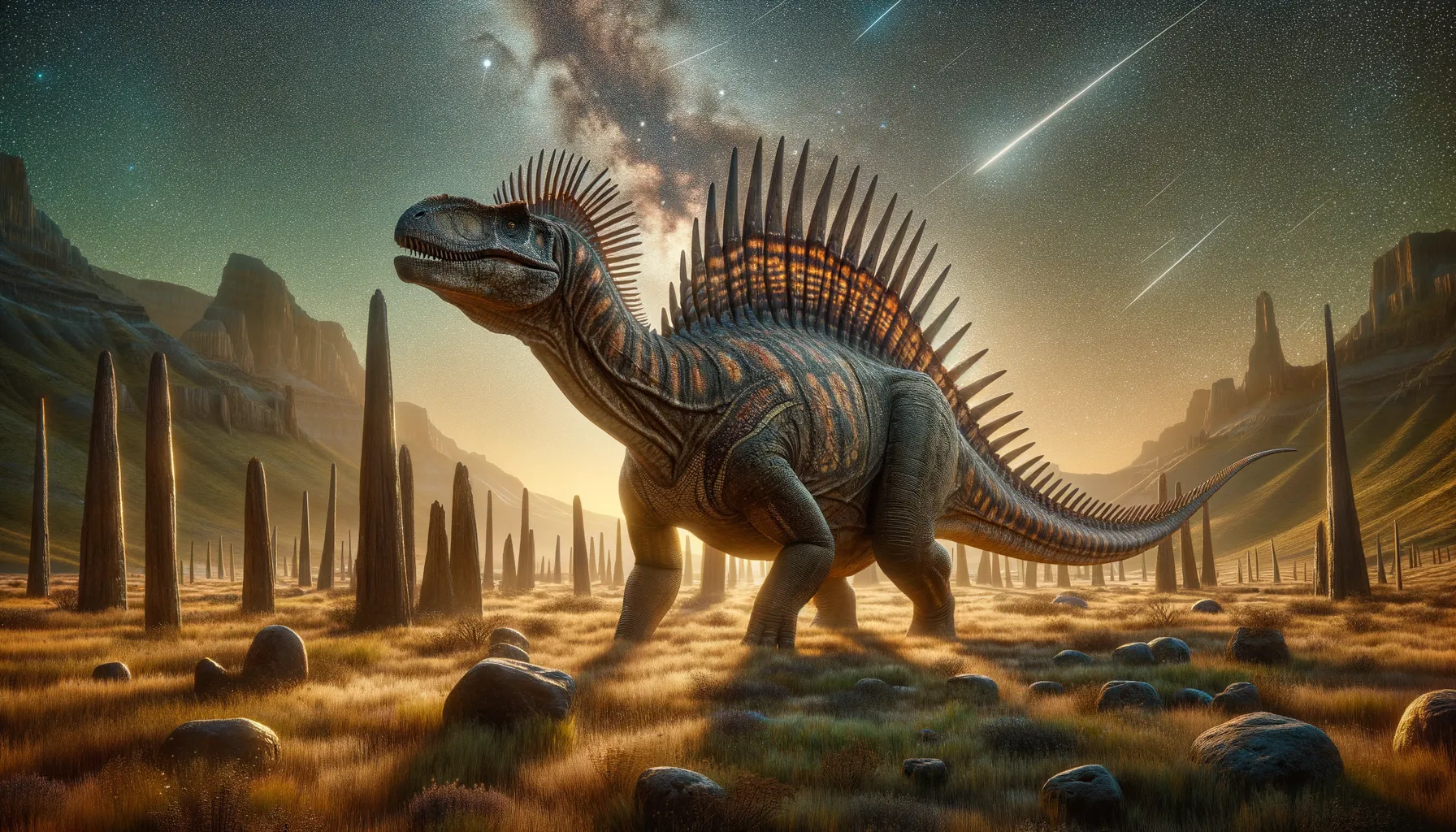
Hesperosaurus
Spiked armor in the Jurassic wild.
Period
Jurassic
Length
About 20 to 23 feet long.
Height
Roughly 9 feet at the hips.
Weight
Approximately 2 to 3 tons.
Hesperosaurus was a herbivorous dinosaur known for its distinctive rows of dorsal plates and tail spikes. It roamed the late Jurassic landscapes of Western North America. Its fossilized remains have given paleontologists insights into the complexity and diversity of dinosaur species living during this dynamic time. These peaceful giants contributed significantly to our understanding of the evolutionary history of stegosaurs.
Diet
Hesperosaurus was a herbivore, feasting primarily on low-lying plants. Its strong beak and teeth were well-adapted for stripping vegetation, possibly including ferns, cycads, and conifers.
Hunting
As a herbivore, Hesperosaurus did not hunt for food. Its primary focus was on grazing and browsing in its lush environments, keeping a watchful eye for predators.
Environmental challenges
Hesperosaurus faced predators like Allosaurus that roamed the same territory, requiring constant vigilance and defensive strategies. The seasonal climate variations during the Jurassic period meant adapting to different environmental conditions, including periods of drought. Finding adequate food sources during less fertile times would have posed significant challenges. Surviving in herds might have offered some protection against these challenges, providing safety in numbers.
Speed
Likely slow-moving, using its bulk for protection.
Lifespan
Estimated to be around 70 to 80 years.
First discovery
Discovered in Wyoming, USA, in 1985.
Fun Facts
- Hesperosaurus is known as the "western lizard" because its fossils were first found in the western United States.
- It lived during the Late Jurassic period, around 156 to 145 million years ago.
- Hesperosaurus was a herbivore, feeding on low-lying plants and ferns.
- This dinosaur had large bony plates on its back, which were likely used for display or regulating its body temperature.
- Hesperosaurus walked on four legs and had a long tail that helped with balance.
- Its fossils were first discovered in Wyoming, in the Morrison Formation, a famous fossil site.
- Hesperosaurus is considered a relative of the better-known Stegosaurus due to its similar body structure.
Growth and Development
Hesperosaurus hatched from eggs and started life as a small, vulnerable hatchling, requiring rapid growth to avoid predation. It likely experienced different growth phases as it matured, gaining size and developing its characteristic plates and spikes. The rapid growth in early years might have been an adaptation to ensure survival in a predator-filled environment.
Habitat
Hesperosaurus inhabited forested areas and open plains, which offered plentiful vegetation for feeding. The environment of the late Jurassic was rich with plant life, providing ample resources for this and other herbivorous species. It likely moved about in groups, covering vast areas to meet its dietary needs, while also staying close to water sources.
Interaction with other species
Hesperosaurus lived alongside a variety of dinosaurs, including sauropods and theropods, and interacted primarily through competition for resources. While it wasn't a predator, its presence in herds may have influenced predator-prey dynamics by deterring solitary predators. Its physical adaptations likely increased chances of avoiding conflicts, with the plates serving as visual deterrents against aggressive interactions.
Natural lifespan
Hesperosaurus's natural lifespan might have reached up to 80 years under ideal conditions.
Reproduction
Hesperosaurus reproduced by laying eggs, similar to modern reptiles. Nesting sites might resemble those of some modern-day turtles, with eggs laid in shallow nests. It's possible that offspring were left to fend for themselves after hatching, but some parental care can't be ruled out.
Social behaviour
Hesperosaurus likely lived in groups or herds, which provided protection and social interaction. Herding behavior would have been advantageous for spotting predators more effectively, sharing information about food sources, and caring for young. Communication might have included visual displays or vocalizations, although the specifics remain speculative.
Fossil locations
Hesperosaurus fossils have primarily been found in the Morrison Formation of Wyoming. The discovery of these fossils within this formation has contributed significantly to understanding the distribution of stegosaurs in North America. Additional finds nearby indicate it might have ranged widely across the region during the late Jurassic.
